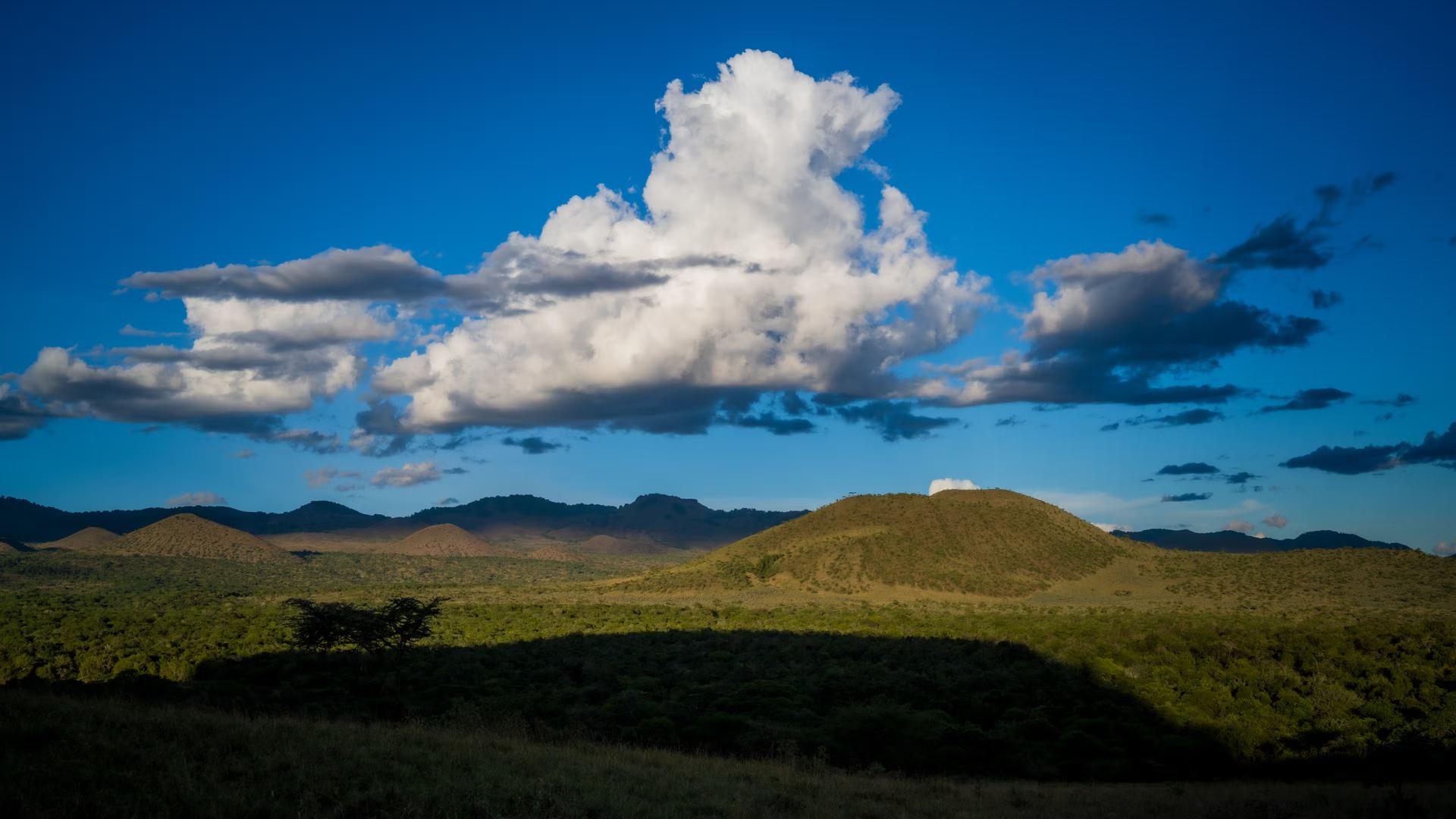
Protecting nature for climate and people in Kenya’s storied hills
Nestled near Mount Kilimanjaro, Kenya’s Chyulu Hills stretch across forests and savannas, and are said to have inspired Ernest Hemingway’s “Green Hills of Africa.” This land is home to Maasai and Kamba communities, as well as Kenya’s largest population of African elephants and the critically-endangered black rhino.
But these storied hills are at risk. Overgrazing, poaching and deforestation — especially for agriculture and charcoal production — have put increased pressure on the land, wildlife and people. Climate-driven droughts and unreliable rains delivered additional blows — decimating livestock and slashing farmers’ incomes.
To address these issues, Conservation International and partners have implemented a forest carbon project under the REDD+ initiative¹ alongside government agencies, environmental organizations and local communities — which have full decision-making power over how the project’s carbon revenues are spent. Their mission is clear: to invest in education, health care and new job opportunities that will improve families’ well-being, while alleviating the economic pressures that drive deforestation.
In the past, NGOs or other organizations have often come in and tried to tell communities what they need. This is different. The decision power sits with local stakeholders. They use the funding as they see fit. It creates an incentive to align everyone toward long-term goals and think strategically — not just for one year, but multiple years.”
Theory of Change
Given the drivers of deforestation across Chyulu Hills, protecting forests requires providing local people with alternative sources of income that preclude the need to clear more forest.
In 2017, Conservation International and the Maasai Wilderness Conservation Trust joined partner organizations to launch the REDD+ forest carbon project to prevent deforestation, and support the livelihoods and well-being of local communities. The project flips the script on market forces that have historically placed a higher value on forests when they are dead than alive. It works like this: Companies or individuals looking to reduce their carbon pollution can buy and trade forest-based carbon credits to offset a portion of their emissions. Revenues from these credits — each of which represents one metric ton of avoided emissions — are then invested in communities as an incentive to restore their forests and stop deforestation, the second-leading cause of climate change after fossil fuel use.
And while reducing carbon emissions to stem climate change is a global win, the project’s local benefits are equally profound. Carbon revenues have funded an emergency school food program during a recent drought, ensuring children don’t go hungry. They’ve improved village health services, making it safer for women to give birth closer to home. And they have even provided scholarships for the neediest families, in some cases covering the entire cost of students’ secondary education.
When I was young, life was easy. The land provided for us. Now people have to migrate from one place to another in search of water. The pressure to make ends meet is immense, and the droughts are making it worse. When revenues started to produce tangible benefits that communities could see, that’s when it started clicking in people’s minds. People started believing in the project. They felt a sense of ownership over it.”
Mitigating global climate change
Forests like those in the Chyulu Hills are one of the best options for slowing climate change — if they are left standing. This project spans more than 410,000 hectares (one million acres) of land. It prevents 580,000 metric tons of greenhouse gases from entering the atmosphere every year. Over its 30-year lifetime, the project is expected to prevent at least 18 million metric tons of climate-warming carbon from entering the atmosphere.
Local Impact

Livelihoods
To provide for their families, people living in Chyulu Hills are turning to a “sweet” enterprise that also protects the forest: beekeeping for honey.
So far, the Chyulu Hills carbon project has helped establish 930 beehives across the project area and distributed 73 beekeeping kits, including suits and equipment. Honey sold in local shops and on the Mombasa highway provides extra income for families. They plan to open a new solar-powered honey processing plant to improve the quality and packaging of the honey — with the hope of marketing it more broadly.
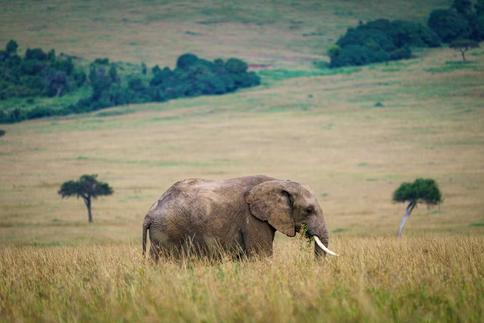
Biodiversity
The project also supports biodiversity. To help protect the region’s iconic wildlife — including African elephant and black rhino — carbon revenues have been used to hire a new cohort of forest rangers, build elephant-proof fencing, and create roads and firebreaks to better manage large mammals.
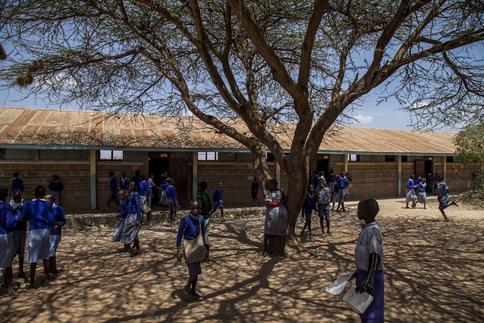
Education
In Chyulu Hills, families grapple with dilapidated schools and crowded classrooms where 70 students might share fewer than 15 desks. Over the years, communities have used the carbon revenues to fix infrastructure at five primary schools — erecting new fencing to keep elephants out, building latrines and staff housing, and installing solar panels, water tanks and an electric pump.
Since 2019, the carbon project has also provided scholarships for nearly 4,000 children, with about 150 graduating with their entire secondary education paid for by carbon credit revenues.

Gender
Chyulu Hills is committed to educating girls. Using carbon credit funds, communities have launched an initiative aimed at tackling “period poverty” — a significant hurdle for many young girls in Kenya. Funded by carbon revenues, the program not only provides sanitary products, it also helps break the stigma surrounding menstruation, which has long kept girls out of school.
So far, the initiative has distributed more than 600 period kits — complete with reusable pads sewn by local women; soap; cloth and other essentials — to girls in 15 schools within the Rombo community. The impact? Period-related absenteeism has dropped from 26 percent to just 7 percent.
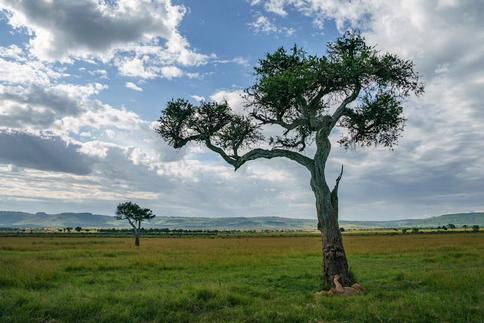
Emergency food program
Carbon finance has also been used for emergency relief. During the drought of 2022, the Chyulu Hills project began using carbon revenues to provide meals of beans, maize and other food staples to children. Since then, the program has distributed food to 35,000 students in 94 schools across the Chyulu Hills region.
Assurances in Chyulu Hills
Sustainable Development Goals
The Chyulu Hills project addresses the following goals (learn more about SDGs):
- Zero hunger
- Good health and wellbeing
- Quality Education
- Gender equality
- Clean water and sanitation
- Affordable and clean energy
- Responsible consumption and production
- Climate action
- Life on land
The Maasai communities strongly support this project and it is an important opportunity to further clearly demonstrate building our local economy based on protecting the natural environment, living sustainably, and maintaining our cultural link to the land while promising a better future for generations to come.”
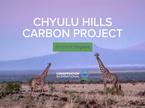
Publications
Chyulu Hills Carbon Project
Further information
Conservation at work in Chyulu Hills
Our Partners
Kuku Group Ranch
Kuku A Group Ranch
Mbirikani Group Ranch
Rombo Group Ranch
Maasai Wilderness Conservation Trust
Big Life Foundation
Sheldrick Wildlife Trust
Kenya Wildlife Service
Kenya Forest Service
¹ REDD+ is a mechanism developed by the United Nations that provides economic incentives to protect forests. Learn more about REDD+
In compliance with California Assembly Bill 1305 (2023), Conservation International shares the following information on its supported carbon projects: Chyulu Hills Carbon Project Disclosure